|
|
|
The Telex
BTR-800 UHF Wireless Intercom Base Station with full-duplex beltpacks
Los
Angeles Area, Dallas, San Francisco and Bay Area, San Diego Area,
Orlando, Las Vegas,
More Cities |
|
|
In a vast majority of shows, the
proper communications systems can make the difference
between a sloppy show and a professional presentation.
Generally whenever there are three or more technicians
(especially if the are in separate locations) an
intercom system is vital to the coordination of cues.
As the number of people directly involved grows the
need increases exponentially, and the requirement for
sophistication of the system increases as well. Most
professional intercom systems are quite simple in
structure, setup, and operation. A basic system
consists of a base station/power supply, local
stations, headsets, and cabling.
On more complex shows where there
are several groups of operators who must communicate
among each other, a multi channel system is the best
option. This way the electrician and spotlight
operators can coordinate their cues, the video
Technical Director can call camera shots, the
production crew can coordinate with each other and the
talent, and the sound crew can communicate, etc. the
separation of the groups eliminates a logjam of cue
calling at each major transition as well as allowing
each group to communicate problems and issues that
develop over the course of the presentation.
Wireless headsets are also a very
beneficial addition if there are people in the crew
who must have freedom of motion around the entire
stage area. Wired headsets can limit the area of
movement to a few feet while a wireless headset can
allow the stage manager to go where every he is
needed. It is also a good idea to give wireless
headsets to the trouble shooters on the crew; once a
trouble shooter must go off his wired headset to fix
something, he is gone until that problem is fixed and
he returns, regardless what may arise in the mean
time.
A properly designed intercom system
will improve the overall quality of a presentation as
well as heading off many problems before they become
apparent to the audience. This is a small investment
to help insure a smooth presentation.
|
|
|
The Telex BTR-800 is a 2-channel,
frequency-agile UHF wireless intercom Base Station, with
channel access from each of four full-duplex beltpacks,
stage announce output with relay closure, wireless talk
around (ISO), the patented Enhanced ClearScan channel
search feature, and a talk/listen headset station at the
base.
The BTR-800 features a transparent graphical user
interface and a backlit display, with advanced
technology functions such as combination tone code/RF
noise squelch and DSP digital audio processing.
This unit has a A4M Telex headset jack and works on A2 -
518-536 MHz frequencies.
Key Features
• Wireless UHF intercom Base Station with frequency
agility, full duplex, and huge selection of available
frequencies organized in independent 18 MHz bands
• Factory selected preset frequency groups, 1000'
operating range, Transmit power level switch
• Independent front Portable Station enable/disable
buttons with LED status indicators, Telex or RTS front
panel 4-pin headset connector reads dynamic or electrets
headset boom mic type automatically
• Enhanced ClearScan two-button frequency selection for
optimal, interference- and inter modulation-free location
use, ranks available frequencies in order of reliability
• Simultaneous support of up to 4 beltpacks, expandable
• Large backlit LCD, transparent, menu-driven Graphic
User Interface for simplified navigation and assignment
• Full function Talk/Listen headset station with
dedicated headset and boom mic volume and gain controls
,allows for fifth simultaneous user (director, producer,
engineer) on intercom channel
• Compatibility with Audiocom, Clear-Com, RTS/RTS matrix
wired and wireless intercoms, dedicated 2-wire XLE and
4-wire RJ-11 connectors
• Dual Voltage power supply for international use, XLR
balanced Auxiliary audio input and output connectivity
The new Telex BTR-800 is a fully synthesized UHF
wireless intercom system that features over 1440
selectable frequencies to ensure you never have a
frequency conflict again. Ideal for busy RF
environments such as musical theatre, broadcast, touring
and anywhere you have a lot of wireless mics. In
addition to unprecedented RF performance and
flexibility, the BTR-800 has 2 independent intercom
channels, and can interface natively to ClearCom, RTS or
Telex systems. The BTR-800 hosts up to 4 beltpacks, and
has both stage announce and "Wireless Talk Around" which
allows you to speak only to the other TR-800 beltpacks
without sending to the rest of the external intercom
system. The heavy duty beltpacks are durable and well
layed out, because our Wireless Com system are there to
make your life easier, not complicate it. The best part
about the BTR-800 is our rental price - the same as our
other RF intercom products! Give
us a call to reserve your booking
Standard Features:
1) Fully UHF
a) Both the transmitters and the receivers operate in
the UHF frequency band.
b) Some Existing products are split band VHF/UHF mixed
devices that have not performed well in hostile RF
conditions and have not been well accepted in the
marketplace among RF savvy users.
2) Fully User Synthesized
a) The user can select any TX frequency within the 18MHz
transmit operational bandwidth in 25KHz increments –
that’s 720 transmit frequencies to choose from for each
of two transmitters!
b) The user can select any RX frequency within the 18MHz
receive operational bandwidth in 25KHz increments –
that’s 720 receive frequencies to choose from for each
of four receivers!
3) Enhanced ClearScan™
a) Both the base station and the beltpacks can scan for
clear frequencies and tell the user
which RF channels to set the system up on.
b) This is an advanced form of our existing ClearScan
technology. It actually looks at all of the available
frequencies in the pre-intermoded groups and ranks them
so that the user knows the best frequencies to use.
c) A user can walk into a new venue in a new city and
have a clear set of frequencies in less than a minute
with the push of a couple of buttons!
4) Two Intercom Channels
a) Each beltpack can access two separate and distinct
intercom channels, one at a time, which can be fed to
the base station in 2 wire or 4-wire form. All beltpacks
share access to the same two intercom channels and any
combination of beltpacks can utilize either channel at
any time.
b) Each intercom channel can be selected as either
2-wire or 4-wire. Selection is made via convenient front
panel buttons with LED indicators for each for each
channel.
c) The intercom 2-wire interfaces are completely
AudioCom ® , RTS™ and Clear-Com ® compatible. No
external interfaces necessary!
5) Wireless Talk Around (ISO)
a) The WTA (wireless talk around) button (sometimes
called ISO in broadcast) on the
beltpack lifts the user’s audio off of the intercom bus
and routes it to the other wireless beltpacks on his
channel for a “private” conversation.
6) Stage Announce with Relay Closure
a) The Stage Announce button routes the user’s audio to
a line level +8dB output on the back of the base station
and triggers a relay closure for as long as the button
is depressed.
b) This is a super feature that can allow a user to
activate a two-way radio, greenroom speakers or a GPI
input on a matrix intercom system.
7) LCD Displays
a) Both the base station and the beltpacks have LCD
displays that allow the user to easily and quickly make
changes to the operating parameters of the system.
b) This user interface is extremely intuitive and marks
a substantial improvement in system usability over any
other wireless intercom model.
8) “Fifth Person” Talk/Listen Station at Base
a) The base station has a standard 4-Pin XLR headset
connection (reverse for RTS versions) that allows a
fifth user to talk and listen (just like another
beltpack) on intercom channel A or B or Both.
9) Intelligent Transmitter Power
a) The base station has two individual transmitters (one
for each intercom channel - they share a common antenna)
that each put out 100mW of power.
b) Each beltpack has one transmitter that normally puts
out 50mW of power.
c) Intelligent Power? Yes! The beltpack senses when it
is close to the base station and intelligently reduces
it’s output to 10mW. This effectively eliminates the
“near – far” desensing problem experienced in other
wireless intercoms.
10) Numerous Beltpacks in Simultaneous Operation
a) With the current system architecture, any user using
the pre intermoded groups can operate two base stations
with up to eight beltpacks in any one operational band.
Many more base stations and beltpacks can be coordinated
by more RF savvy users (and rental houses) for high end
RF venues.
b) Once the second band is available (Sept-01, see chart
below) any user will be able to utilize 16 beltpacks in
one location (2 base stations and 8 beltpacks per band)
and power users will be able to use many, many more.
11) Cast Magnesium Beltpack
a) The beltpack is an extremely light, strong and
durable cast magnesium. That’s the metal “Mag” wheels
are made from! Metal, not plastic!
12) Detachable Beltpack Antennas
a) The beltpack has detachable antennas. This is great
for shipping and storing. It is also a big plus if there
is a service issue. The user can just buy new antennas
rather than having to send the whole beltpack in for
repair.
b) The antennas utilize a stud-type connector that does
not have a fragile center pin to break off or bend.
Frequency Bands and Frequency Coordination:
The 800 ships with 24 Pre-Programmed groups of intermod
free frequencies so virtually any user can get started
right out right out of the box. More RF savvy users will
also be able to save their own favorite frequency sets
in easy to use User-Defined groups. These frequency
groups, in conjunction with our revolutionary new
Enhanced ClearScan technology offers users the most
powerful, yet simple way, to select clear frequencies
regardless of location or venue. The system will be sold
in TX bands and RX bands (referenced as they relate to
the base station). The chart below shows the bands that
will be available first. The first two sets of
frequencies will be A2 and C6. The A2 band, as shown
below, will have a base transmit range of 518 to 536 MHz
and a base receive range of 632 to 650 MHz. The C6 band
will have a base transmit range of 554 to 572 MHz and a
base receive range of 704 to 722 MHz. In the first few
months of shipment the 800 will only be offered in the
C6 configuration.
Our services don’t end once your rental
equipment is delivered and installed. We understand that managing IT
equipment means more than just "procurement". That is why
we offer exceptional technical support and services. In addition to 24/7
support, our experienced technicians will work with you from
installation until final completion of the project.
Call
866-858-1174
or 866 858 1174 for prices
|
|
|
Click on any word or text to translate it. Download
Babylon 6 for FREE now!!
 |
|
Rent
Translation Systems, Listening Devices with Headsets RF Systems That Meet The Highest
Demands
The T17 transmits in 10 Wide-Band channels! The T17
features an audio indicator, audio level adjust, and
will accept an unbalanced line-level input or a Williams
Sound condenser microphone. The T17 Transmitter and R7
Receivers are field-tunable to 10 wideband channels. The
T17 connects to the existing sound system or can be used
with its own mic (not included). Listeners use R7
receivers to hear clearly and easily from anywhere in
the seating area. A remote antenna (ANT 005) and rack
mount kit (RPK 004) are also available. The T17
accepts virtually any balanced or unbalanced input,
while top audio quality is assured by low noise
circuitry and a sophisticated audio processor and
headset (Comfortable dual headphones have an adjustable
headband. Foam cushions can be washed or replaced. 3.5mm
plug, 1m cord. Recommended for FM Receivers, Select IR
Receivers,). |
|
|
Rent
INTERPRETATION EQUIPMENT...Listening
Devices RF systems
provide the simplest and least expensive solution to
language interpretation. Easy to use, flexible and
versatile RF systems are the most popular interpretation
systems on the market.
The systems available are applied in business and
government meetings, international conferences,
bilingual workshops, site tours, training seminars,
houses of worship and courthouses - everywhere language
interpretation services are needed.
RF systems are best used in these applications:
1) Single and Multi-Language Events
2) Portable applications (room to room)
3) Large or small rooms
4) Temporary installations
5) Sound re-enforcement
6) Hearing Assistance
7) Indoors or Outdoors
Our expert staff will help determine your specific
application and custom build a system that is right for
you, and your budgetary plan.
Call our offices for a turn-key solution available from
1-6 language systems.
Call
866-858-1174 or
email
for price quote
|
|
|
How
to Register with us as an Interpreter
We receive a huge number of requests to register with
us, however very few requests meet our stringent
standards. Here is what we are looking for:
Simultaneous conference interpreters with a minimum
experience of 5 conferences interpreted simultaneously
in a booth (please name at least the last 5 conferences
you worked at, on your resume, with contact information
for the person who hired you). Interpreters may work in
any language combinations, and must live in United
States, Canada or Mexico.
Technicians with experience in setting up and operating
audio-visual equipment (not necessarily interpreting
equipment) at conferences are also welcome to contact
us.
We are not looking for written translators at this time.
How to contact us:
If you meet one of the requirements above, please
Simultaneous conference interpreters email us your link.
Also, please note that we never accept unsolicited email
attachments.
|
|
|
|
|
Frequently Asked Questions about Conference Interpreting
What is simultaneous
interpreting?
Simultaneous Interpreting is
when an interpreter listens to a presentation and relays it in
another language with no significant delay.
What other types of
interpreting are there?
Consecutive interpreting.
This is where the presenter pauses after each phrase or sentence
to allow the interpreter time to relay it into the other language.
Although this is generally less expensive than simultaneous
interpreting, the meeting will take twice as long as normal, and
it can only be used when there are a maximum of two languages
(usually English plus one other).
Are all simultaneous
interpreters the same?
Simultaneous interpreting is
the most difficult form of interpreting. Only a small percentage
of interpreters can truly interpret simultaneously, that is:
listen to someone speaking one language, and, without pausing,
speak the same idea in another language.
A professional simultaneous
interpreter should be able to speak both languages fluently,
without a strong accent that would make him or her hard to
understand. The best interpreters also speak in an interesting way
so that their voices are a pleasure to listen to.
If your event will be
discussing 'technical' subjects make sure you let us know when you
request interpreters, so we can select those who have a background
in your subject area. An interpreter who is very knowledgeable in
legal matters may not be the best person for an electronics
conference!
How many interpreters
will I need?
Simultaneous interpreters
generally work in pairs. This form of interpreting is very
concentration-intensive, so the interpreters will normally work as
a 'tag team' to cover the sessions. If the meeting lasts less than
1 hour, it may be possible for a single interpreter to cover it.
For top-level events, such as government conferences, a team of 3
may be required. You might also need a team of 3 if the working
day is very long. Most interpreters expect a working day to be
between 6 and 8 hours of actual meeting time. Of course, if you
have more than one room requiring interpreting at the same time,
or more than one foreign language, you will need more teams of
interpreters.
Tip: To keep expenses down,
try to plan the schedule so that the meetings requiring
interpreting take place one after the other, in the same room,
rather than all at the same time in different rooms.
Can the same person be
used to interpret from English to Spanish and from Spanish to
English, for example?
Some interpreters are
equally comfortable in both directions, others prefer to work only
into their mother tongue. If you expect to need interpreting in
both directions, be sure to let us know.
What kind of support will
interpreters need to do their best work?
The most important support
you can give your interpreters is written materials to prepare
from. We cannot stress enough the importance of helping the
interpreters prepare themselves for your conference. If possible,
we recommend that you supply us with advance scripts of the
presentations. If these are not available, you should procure
abstracts, copies of overheads or PowerPoints that will be used,
sales brochures, and a list of acronyms and abbreviations that may
come up. You should also let us know of any web-sites that would
give us background information. All materials should reach us at
least a week before the first day of interpreting.
Expect to provide meals and
refreshments and drinking water for your interpreters while they
are working, and if they have been flown in from another city, you
will need to provide all other meals too.
At meal and break times,
remember to give your interpreters a break too. Do not expect them
to do informal interpreting at the meal table for instance. By
lunch-time, their brains may need to be 'de-fried', and that
requires taking a break from thinking! If necessary, we can hire
bi-lingual hosts to help facilitate meal-time conversations. Hosts
are often available at much lower rates than professional
interpreters.
What else will I need?
For simultaneous
interpreting, you will also need to rent
equipment so that your delegates can hear the interpreter's
voice.
|
|
|
|
|
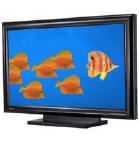
NEC
Resolution 1365x768
Aspect Ratio 16:9
Colors 68.7 billion colors
Dimensions 48.1in W 29in H 3.8in D |
50 Inch Pioneer or
NEC Plasma Displays
Take the next
step, rent a bigger display for your next event. This
display can be viewed from center isle at trade shows. This larger
size offers integrators
and designers versatile installation options to suit virtually any
application. Compare to the previous model, this model now
produces 17% less heat and has an advanced environmental tolerance
device which simultaneously reduces operating noise at 23%. The
unit, although 50 diagonal inches, is surprisingly light weight
and is one of the slimmest available on the market. With the 160
degree viewing angle, both vertically and horizontally, this
plasma panel can be viewed from almost anywhere, even across the
isles. Users can change aspect ratios from standard 4:3 to
widescreen 16:9 format to accommodate DVD presentations and
widescreen broadcasts. Screen Size 50-inch diagonal
Dimensions 48.1in W 29in H 3.8in D Plasma
Mfg. Information |
|
|
|
|
|
|
|
 |
42 Inch
NEC With 1024 x 768 XGA
resolution, Advanced AccuBlend Technology and a 3-2 pull down
converter ensure the best possible brightness, contrast, color and
image quality from any source. Realistic color reproduction via
NEC's exclusive Capsulated Color Filter Technology is now enhanced
by AccuCrimson, a filtration technology that produces the purest
shade of red yet possible in a plasma display. VGA to UXGA in both
16:9 and 4:3 aspect ratios
Dimensions 40.1"x 24"x3.5" |
|
|
|
|
|
|
|
Cobra Plasma
Stand
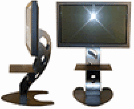 |
To the right, our standard dual post floor stand designed to
be used with any of our flat or tilting PDM series plasma
wall mounts in the horizontal or vertical display mode. The dual
2" chrome posts allow for height adjustability with
(average is 5.5 ft. in height. Optional flat accessory shelf
installed above or below the display in a front or rear-facing
mode.
To the left, our fancy cobra display with shelf.
|
Dual pole Plasma
Stand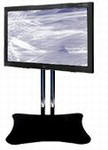 |
|
|
|
|
|
|
|
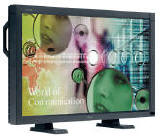 |
NEC LCD3000
LCD TV
- 1280 x 768 resolution allows for
crisp text and precise images
- Virtually eliminates the
potential for permanent image burn-in, contributing to optimal
screen performance and longer monitor life
- XtraView® technology allows for
wide-angle viewing
- PC and video
- Detachable speakers deliver an
enhanced multimedia experience with amazing sound quality
- On Screen Manager (OSM®) puts
you in complete control of display setting adjustments
|
|
|
|
|
|
|
|
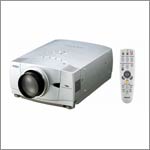 |
The
Great Technology War: LCD vs. DLP If you are new to
the world of digital projectors, you won't have to shop around the
market very long before discovering that "LCD" and "DLP" somehow
refers to two different kinds of projectors. You might not even
know what LCD and DLP are before asking the obvious question
"which one is better?"
Want a really BIG SCREEN...then use a LCD/DLP projector and
connect your computer or even an VHS player/recorder (used as a TV
tuner) and project pictures or presentations up to 15 feet by 20
feet. (can go larger)
Projector Models for rent. |
|
|
|
|
|
|
|
Plasma TV Displays, LCD
Projectors, AV Equipment, Laptop, and Desktop Computer Rental Solutions
Nationwide Call 866 858 1174
|
|
3D LCD
Technology |
Rent LCD Projectors |
Polycom audio video
conference rentals |
|
|
Rent Plasma Displays
|
Specials |
|
Rent Laptop and
Desktop Computers |
Rent Sound and
Stage Equipment |
Rent Computer
Monitor and Printers |
|
View Rental
Product List
|
Rent Slide
Projectors |
Rent DV Camera |
|
Rent Lighting
Equipment |
Rent
AV Equipment
|
Rental Product List
|
|
If you are a multi-show exhibitor, we can
offer you a national account agreement that will provide one competitive
rate for equipment rentals and consistent service for all of your events
nationwide. This enables you to know your costs and budget for your
entire show schedule. We supply on-site IT & A/V technical services to
support your events or presentations anywhere you go in the U.S., thus
eliminating the logistical problems that result from having multiple
contractors.
Our services don’t end once your rental
equipment is delivered and installed. We understand that managing IT
equipment means more than just "procurement". That is why
we offer exceptional technical support and services. In addition to 24/7
support, our experienced technicians will work with you from
installation until final completion of the project.
Call
866-858-1174
or for prices
|
|
|
|
|
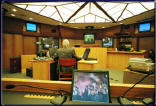 |
 |
 |
 |
|
 |
 |
 |
 |
|
Privacy
|
|
|
Home |
|
|